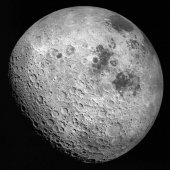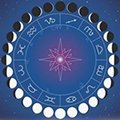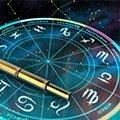Scientists discover new lunar craters
Research Institute Southwest Research, led by a team of scientists, discovered two geologically young craters - one age of 16 million, and the other from 75 to 420 million years - in the darkest regions of the Moon.
"These young impact craters are a really exciting discovery," said senior research fellow Dr. Kathleen Mandt, who summarized the findings in an article published in the journal Icarus. "Finding geologically young craters at this age will help us understand the history of collisions in the solar system."
The discovery was made thanks to the LAMP device (an ice detector in unlit craters) located on board the Lunar Reconnaissance Orbiter (LRO). The device helps to see the reflection of ultraviolet radiation from stars (lines of the Lyman series) from the lunar surface. Using it and the Mini-RF LRO radar data, the team found a series of very large and deep craters near the south pole of the Moon. These deep craters are difficult to study, because sunlight never illuminates them. Tiny differences in reflectivity, or albedo, measured by LAMP allowed scientists to detect these two craters and assess their age.
"We are studying planetary geology to understand the history of the formation of the solar system," said Dr. Thomas Greathouse, deputy principal investigator. Collisions in space played an important role in the formation of the solar system, including the formation of the Moon. Impact craters tell the story of collisions between objects in the solar system.
Since the Moon is dotted with craters, its surface serves as a record of our past. The definition of when collisions occurred helps scientists to compare the motion of objects in the solar system throughout their history. Young craters (in geological time scales - millions of years) also provide information on the frequency of collisions.
Craters can be from a few meters, to several kilometers in width. During the impact, the material is thrown around the crater. Emissions from relatively young craters have uneven surfaces and are covered with light dust. Over millions of years, these features undergo tiny atmospheric influences and are covered with layers of dark dust.
Scientists have established that the areas around the two craters were brighter and rougher than the surrounding landscape. The team estimated the age of one crater about 16 million years. The second crater was already darker and smoothed out and it shows that its age should be at least 75 million years.
Share:
Interesting articles:
- • By 2026, NASA plans to send a mission to prevent the asteroid threat
- • The international team of astrophysicists advanced its theory about 12 black holes
- • A super-earth with a size of only 5 earth masses






